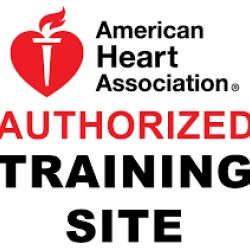Starting a journey in the field of emergency medical services (EMS) is both an exciting and challenging endeavor. As you look ahead to EMT classes, you may wonder how best to prepare and what can be done to ensure success. Fortunately, there are tangible steps to take and strategies to employ that can make your experience smoother and more enriching. This comprehensive guide aims to equip you with insights and tips to excel in your EMT classes.
1. Understand the Scope and Demand of an EMT
Before diving into preparations, it's crucial to grasp what being an EMT entails:
- Physical Demands: EMTs often work in high-pressure environments, requiring lifting, bending, and quick responses.
- Emotional Challenges: You'll encounter a range of scenarios, from minor injuries to life-threatening emergencies. Developing emotional resilience is vital.
Understanding these aspects will mentally prime you for the challenges and rewards of EMT training and the subsequent profession.
2. Strengthen Your Foundation in Medical Science
While EMT classes will cover necessary medical knowledge, having a solid understanding beforehand can be advantageous.
- Anatomy and Physiology: Familiarize yourself with basic human anatomy and how body systems function.
- Medical Terminology: Knowing essential medical terms can help you follow lectures and texts more effortlessly.
There are several online courses, books, and resources to aid in this foundational study.
3. Cultivate Essential Soft Skills
Beyond medical know-how, EMTs need a suite of soft skills:
- Communication: Clear and effective communication can be life-saving in emergencies.
- Teamwork: EMTs often work in teams. Collaborative skills ensure operations run smoothly.
- Critical Thinking: Rapid, effective decision-making is paramount in emergency scenarios.
Engage in activities that hone these skills. Joining group projects, participating in debates, or even solving puzzles can help.
4. Familiarize Yourself with EMT Equipment
Getting to know basic EMS equipment before classes can boost your confidence. Some tools to familiarize yourself with include:
- Stethoscope: For listening to heart and lung sounds.
- Blood pressure cuff: To measure blood pressure.
- Oxygen delivery devices: Masks and nasal cannulas used to administer oxygen.
While hands-on experience will come during training, understanding their functions can provide an edge.
5. Stay Physically Active
Given the physical demands of the EMT role, maintaining good health and fitness is beneficial. Consider:
- Cardiovascular Exercises: Running, cycling, or swimming to boost endurance.
- Strength Training: Building muscle can assist in tasks like lifting patients.
- Flexibility Workouts: Yoga or stretching can improve agility and reduce injury risks.
6. Engage in Preparatory Workshops or Seminars
Many institutions and organizations offer workshops for aspiring EMT students. These sessions provide insights into the EMT curriculum, offering a sneak peek of what to expect.
7. Network with Current EMTs or Students
Talking to current EMTs or those undergoing training can provide first-hand insights. They can share experiences, recommend resources, and offer practical advice on navigating the course.
8. Organize Your Life and Create a Study Schedule
EMT training can be intensive. Having a structured routine can help manage your time effectively:
- Set Clear Goals: Break down the curriculum into manageable chunks.
- Allocate Specific Study Times: Consistency can enhance retention and understanding.
- Prioritize Tasks: Focus on more challenging subjects or skills first.
9. Gather Essential Resources
Invest in recommended textbooks, manuals, and any online resources that your institution suggests. Furthermore, consider supplementary materials such as:
- Flashcards: For memorizing medical terms or procedures.
- Study Apps: Many apps are designed to aid medical students in their studies.
- Simulation Videos: Watching real-time demonstrations can reinforce learning.
10. Cultivate a Growth Mindset
Lastly, but most importantly, cultivate a growth mindset. Be open to learning, receptive to feedback, and understand that mistakes are part of the learning curve. A positive, can-do attitude can significantly influence your success.
Conclusion
Preparing for EMT classes goes beyond reading textbooks; it's about gearing up physically, mentally, and emotionally for the journey ahead. By strengthening your foundational knowledge, sharpening crucial soft skills, and equipping yourself with the right resources, you can lay the groundwork for a successful EMT training experience. Remember, every EMT, no matter how experienced, started with the basics. Your dedication, combined with effective preparation, will pave the way for a rewarding career in emergency medical services.



